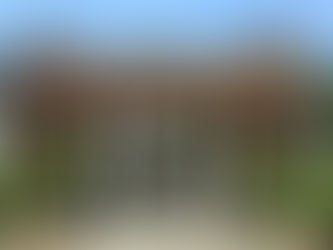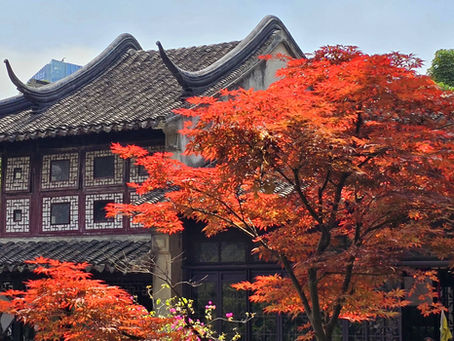top of page

GLOBAL SHANANIGANS

Search


Wat MingMuang - The Temple of Crouching Elephants
Long ago, the land where Wat MingMuang now stands was a vast, fertile swamp, alive with dense reeds and winding waterways. Hidden within this wild sanctuary, majestic elephants roamed freely, revered as sacred symbols of power, wisdom and royalty. Amid this untamed beauty, the temple’s foundations were laid, a place where human devotion met the quiet majesty of nature, shrouded in the whispers of centuries past.
Shannon


Co Loa Ancient Citadel
Dating back to 208 BC, Co Loa Citadel rose as the heart of the ancient Au Lac kingdom under the legendary King An Duong Vuong. Legend tells of a mighty crossbow and protective magic, yet even these could not save the kingdom from betrayal and ruin, a story of power, ambition and ghosts that still linger over the northern plains.
Shannon


The Temple of Literature
Founded in 1070 AD under Emperor Lý Thánh Tông, the Temple of Literature honours Confucius and his disciples, its courtyards, banyan trees and lotus ponds echoing centuries of scholarly pursuit. Later home to Vietnam’s first university, it carries the weight of history and the whispered presence of generations of students, a place where wisdom feels alive, shadowed by the spirits of those who once walked its paths.
Shannon


Yeh Pulu - Water of the Stone Jar
Hidden in a lonely ravine between the Petanu and Pakrisan Rivers, the ruins of this unique 14th-century rock relief lay buried for centuries under volcanic eruptions and vegetation. The site was excavated by Dutch authorities in 1925 and in 1949, a stone gutter was cemented on top in order to drain off water, to prevent erosion and vegetation from taking hold, revealing even more of the stone mural.
Shannon


Hoàn Kiếm Sword Lake and the Turtle Tower
Nestled in Hanoi’s bustling Old Quarter, Hoàn Kiếm Lake offers a serene escape from the city's chaos. This natural freshwater lake, stretching 700 metres across 12 hectares, has been a cultural and historical anchor for centuries, its origins possibly predating Hanoi itself by over a thousand years.
Shannon


The Lingering Garden
In a city celebrated for its canals, silk and scholars, Suzhou’s Lingering Garden represents a pinnacle of classical Chinese garden design. Often referred to as one of the “Four Great Classical Gardens of China,” it embodies centuries of artistic refinement and philosophical thought. Built in 1593 during the Ming dynasty by Xu Taishi, a high-ranking official who sought retirement and tranquility, the garden stands as a personal reflection of his scholarly ideals.
Shannon


The Leshan Buddha - Guardian of the Rivers
In the heart of Sichuan Province, nestled at the confluence of the Min, Dadu and Qingyi Rivers, the Leshan Giant Buddha looms as one of China’s most awe inspiring historical landmarks. Towering at 71 metres high, this colossal statue is the largest stone Buddha in the world and remains a profound testament to ancient Chinese ingenuity and spiritual devotion.
Shannon


Fushimi Inari Taisha Shrine
Famous for its thousands of vivid orange torii gates, Fushimi Inari is an ancient Shinto head shrine and a designated World Heritage site, located in the southeastern part of Kyoto. Dedicated to Inari, the Shinto god of rice, prosperity and foxes, the shrine dates back to the 8th century and remains one of Japan’s most iconic spiritual landmarks
Shannon


The Vassal Kings - Inside the Jingjiang Tomb Complex
Located at the western foot of Yaoshan Mountain, the Jingjiang King Tombs Complex spans over 100 square km's and serves as the final resting place of the Ming Dynasty royal family, who ruled China from 1368 to 1644. This vast and historically rich burial site offers a glimpse into the grandeur and legacy of one of China’s most powerful dynasties, with its sprawling layout and deep cultural significance reflecting the status and influence of the royals interred here.
Shannon


Behind the Crimson Walls - Secrets of The Forbidden City
The enormous Imperial Palace complex, commissioned by the Yongle Emperor of the Ming Dynasty in 1406AD, is the world largest palace and contains the most extensive amount of preserved wooden structures on the planet. Located in the heart of Peking, one of the great ancient capitals of China, the Forbidden City was built to legitimise Yongle's supreme authority (after he usurped the throne) and to assert the power and grandeur of the new capital Beijing, as a stronghold to thr
Shannon


Suzhou - Whispers on the Water
Set in the heart of Jiangsu Province, Suzhou is often called the “Venice of the East”, a poetic nickname but one that barely scratches the surface. Suzhou is more than romantic, it’s resilient. Its story spans dynastic splendour, foreign intrusion, civil war and a remarkable cultural revival. Founded over 2500 years ago during the historical Spring and Autumn Period, the city was once known as Wu.
Shannon


Mount Emei Red Cliff Carvings
The Red Cliff Carvings, also referred to as the Red Cliff Grottoes, are indeed ancient but their exact age is not definitively documented. Based on the creation of the nearby Leshan Buddha, these carvings likely date between 618AD and 960AD. They are located on the northern cliffs of the Emei Mountain Range, one of the Four Sacred Buddhist Mountains of China and is a UNESCO World Heritage Site.
Shannon


The Hidden Temple of Ta Nei
Consumed by jungle and time, very little is known about this temple ruin but it is believed this stone monument was once an ancient hermitage, a meditation retreat for elite monks or a sanctuary for sacred manuscripts. Located near the northwest corner of the holy reservoir of East Baray, deep inside the Angkor Archaeological Park, it was designed and constructed by King Jayavarman VII during the late 12th century.
Shannon


The Ruins of Angkor Thom
The great city of Angkor Thom isn’t just a ruin, it’s a palimpsest of power, religion, blood and time. It’s where Hindu deities once danced with Buddhist ideals and where a king tried to become a god in the eyes of the world. Carved into the Cambodian jungle in 1181AD by the empire’s most ambitious rule King Jayavarman VII, this immense stone citadel rose as the crowning capital of the ancient Khmer Empire.
Shannon
bottom of page